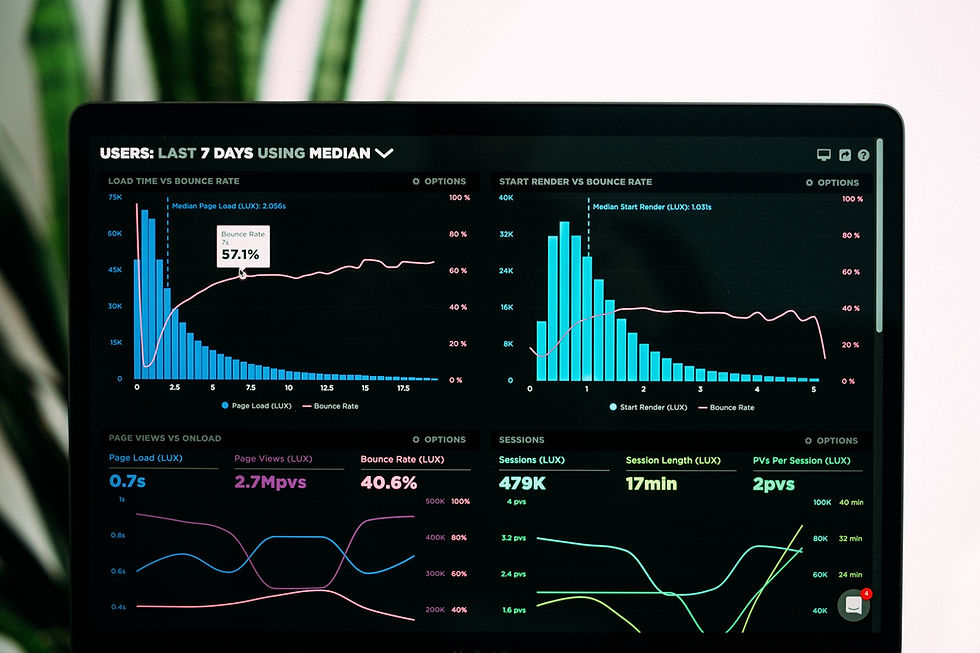How to track KPIs (key performance indicators)
- Teamworks

- Dec 15, 2022
- 3 min read

Key Performance Indicators (KPIs) are an essential metric for any business that wants to measure their progress and success. Understanding what KPIs are and how to track them will help you have a better understanding of the goals your business is working towards and the results being achieved. Let's break down the importance of how to track KPIs and why it matters for your business.
What Are KPIs?
KPIs are measurable values that indicate how well a company is achieving its key objectives. They can be used to evaluate the performance of a department, project, or individual employee, as well as providing insight into the overall performance of a business. Examples include customer service response time, website page views, sales, cost savings, and return on investment (ROI).
Why Track KPIs?
Tracking KPIs allows businesses to quickly assess their performance in real-time and make informed decisions accordingly. This means that instead of relying on gut feelings or intuition to make decisions about marketing campaigns or product launches, businesses can use data-driven insights from their KPIs to make informed decisions based on actual performance metrics. By tracking your KPIs regularly, you can identify areas that need improvement or areas where you are doing better than expected.
How To Track KPIs?
To effectively track your KPIs there are three steps you should follow:
Identify which KPIs will provide meaningful insights
Set up processes for collecting data
Analyze and report results regularly
Once you have identified which KPIs will provide meaningful insights to your business’s performance, set up systems for collecting data related to those indicators such as web analytics tools or customer surveys. Finally, analyze the results regularly so that you can identify trends and make adjustments accordingly.
Manually Tracking KPIs
The simplest way to track key performance indicators is through manual tracking. This method involves manually inputting data into a spreadsheet or other type of document on a regular basis. While manual tracking can be time consuming, it is often the best option for companies that need to keep track of very specific data points or require detailed analysis over time. Manual tracking also allows you to quickly identify any inconsistencies or outliers in your data that may not have been immediately obvious through automated tracking or visual analytics.
Automated KPI Tracking
Automated tracking is another method used commonly for KPI monitoring. Automated tracking involves setting up tools like Google Analytics or other web-based services to monitor certain aspects of your business’s performance automatically. Automated systems can quickly gather large amounts of data, which makes them ideal for businesses that need real-time insights into their metrics and KPIs.
The downside of automated tracking is that it can be expensive due to the cost of purchasing software licenses and maintenance fees associated with these services. Additionally, these services may not provide as much detail as manual tracking, so they may not be ideal for businesses that require more granular analysis of their data sets.
Visual Analytics
Visual analytics allow you to view your key performance indicators in an easy-to-understand graphical format such as charts and graphs. Visual analytics help you quickly identify trends in your data so you can make informed decisions about how best to optimize your business processes and improve overall performance.
Visual analytics also allow you to compare multiple indicators at once, allowing you to gain valuable insights into how one indicator affects another—a process which would be difficult if using manual or automated techniques alone. However, visual analytics require specialized skillsets and technologies in order to effectively implement them into your existing systems, so they may not be suitable for all businesses depending on their size and budget requirements.
Tracking KPI is essential for any successful business strategy because it allows entrepreneurs to measure their progress towards their goals and objectives over time. By setting measurable goals, selecting the right metrics for tracking these goals, then regularly monitoring progress while making adjustments as needed, business owners and managers can ensure that they are optimizing their strategies for maximum success in the long run. With regular KPI tracking in place, businesses can confidently move forward with their strategies knowing that they are on track with achieving their desired outcomes over time!




Comments